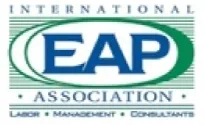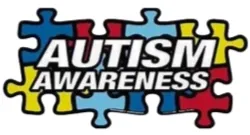Life is a balance of holding on and letting go ~ Rumi
How to Approach a Troubled Employee
- ESTABLISH levels of work performance you expect. How much irresponsibility will you tolerate? What is acceptable and unacceptable to you?
- RECORD all absenteeism, poor job performance, etc. Specific behavioral criteria are necessary.
- BE CONSISTENT. Don’t tolerate more from one employee than you would with another because you feel sorry or inadequate.
- Don’t be an “Armchair Diagnostician.” Avoid labeling. Base the confrontation on job performance—not depression, anxiety, schizophrenia, etc..
- BE FIRM—but tell the employee you are trying to help. Try to gain their trust.
- BE HONEST. Don’t hedge; speak with authority. The employee will respect you for it.
- BE READY to cope with the employee’s resistance, defensiveness, and even hostility. An effective method of overcoming their defensiveness would be for you to talk about your own feelings first. Tell the employee how this situation makes you feel without moralizing. Once you’ve done this, then go to the specific impaired job performance. Never jump to the job performance first; that creates hostility, resistance, and defensiveness.
- ACCEPT NO EXCUSES for failure. If you accept excuses, you don’t really care and they’ll know it. If they use excuses, go back to the specific job criteria you expect him to perform. Try to get the employee to acknowledge the problem (or admit that they have a problem). Then work from that. Try to get the employee to tell you what the problem is—even if you know. Avoid saying so, if they resist. Indicate that you are willing to get involved—or—indicate your concern and desire to get this problem worked out for his sake.
- DO NOT MAKE VALUE JUDGMENTS. It’s better to say: “I don’t like this or that” than “I think you are wrong.” Rely on your own feelings and specific job performance criteria.
- DON’T MORALIZE. Avoid the appeal to “should” and “shouldn’t.” Don’t tell the employee what they should or should not do. This creates hostility. It is better to tell the employee what you expect.
- NEVER ask WHY you do this or that, or why do you drink so much, etc. “Why” serves as an excuse for them. Remember, they're responsible for their own behavior always.
- If the employee says they are “sick”—or makes other excuses, let the employee know that there is no excuse for prolonged impaired job performance. The employee is responsible for their own behavior.
- Do not let the employee “BOX” or “CORNER” you. Hold fast to your contention that it is their responsibility to improve their job performance by seeking help. Yours is a therapeutic and legitimate argument, theirs isn’t.
- Do not let the employee play you against higher management and/or the union. You are not in the middle here—they are. No union ever praised poor job performance. Many times the union can be of valuable assistance in motivating the employee and a combined effort increases his chances for improvement.
- Get a commitment from the employee and monitor it. Set down specific work criteria that the employee agrees to work for during a certain time period. RECORD this.
- DON’T MAKE IDLE DISCIPLINARY THREATS – Follow through with your warning. (Use specific time intervals: day, week, a certain number of shifts, etc.)
- WHEN CONFRONTING a troubled employee, be specific about the behavior you are referring to when you point to his job performance. A legitimate and very effective approach would be one similar to the following: “It is possible that personal problems may be contributing to your impaired job performance. Therefore, I strongly urge you to contact the Employee Assistance Program. Whether you do or not, I will be contacting you again at a specific time and day to consider more severe disciplinary action if there is no significant improvement.” To avoid employee defensiveness, put yourself into your statements.
- Take the responsibility to intervene. Do not be afraid to interfere or get involved. You have a legitimate right to interfere when their behavior is interfering with their job performance. Remember, it is highly probable that a troubled employee’s performance (both on and off the job) will improve once they are confronted constructively and consistently. It is a fact that they may get worse if their ignored or just warned occasionally.
Monitor – Be Consistent – Follow Through
Do: Remember that behavior and emotional disorders are progressive, treatable illnesses.
Do: Make it clear that if a referral to the EAP is accepted by the employee, any information obtained by the EAP regarding the employee is held strictly confidential and is protected by State & Federal laws.
Do: Emphasize that you—the supervisor—are concerned only with work performance.
Do: If in doubt at any point, consult with an EAP counselor who is available to guide you in this process.
Don’t: Try to diagnose the problem.
Don’t: Moralize. Limit criticism to the unacceptable level of work performance, interpersonal relationships with fellow employees, tardiness, or unusual bizarre behaviors.
Don’t: Be misled by “con” stories or sympathy evoking tactics that problem employees and emotionally disturbed persons excel at.
Don’t: “Cover-up” behaviors that affect work performance for a good acquaintance or “friend.” Remember, emotional disorders are PROGRESSIVE illnesses that may be fatal if left untreated.
Intervention in an employee’s deteriorating work performance is a supervisor’s rightful role and responsibility. They should:
- OBSERVE
- DOCUMENT
- CONFRONT
- REFER
The four steps outlined above will assist you in taking consistent appropriate action whenever an employee’s judgment or performance appears to be impaired.
Do's and Don'ts - Supervisor
How to Approach a Troubled Employee
The first step, identification, consists of the supervisor seeing changes in an employee’s work pattern that are violations of work policy and/or may adversely affect safety and work performance. Identification of an individual as a candidate for the Employee Assistance Program will be based solely on one or more of the following
- Poor attendance.
- Inability to report to work on time and maintain a regular work schedule.
- Dramatic lessening of worker’s efficiency in job performance.
- Frequent absence from the assigned work area.
- On-the-job performance which jeopardizes the safety and health of other employees.
- Abnormal number of early quits.
- Development of absenteeism pattern.
- Unusual or belligerent attitude toward fellow employees.
- Reporting to work in an unfit physical condition
In the event one or more of the above factors is present and the supervisor has probable cause to believe the situation may require counseling, it is recommended that a referral be made to the Employee Assistance Program.
Under no circumstance will a supervisor address an employee with a label or diagnosis. It is not the position of the supervisor to impose judgment.







